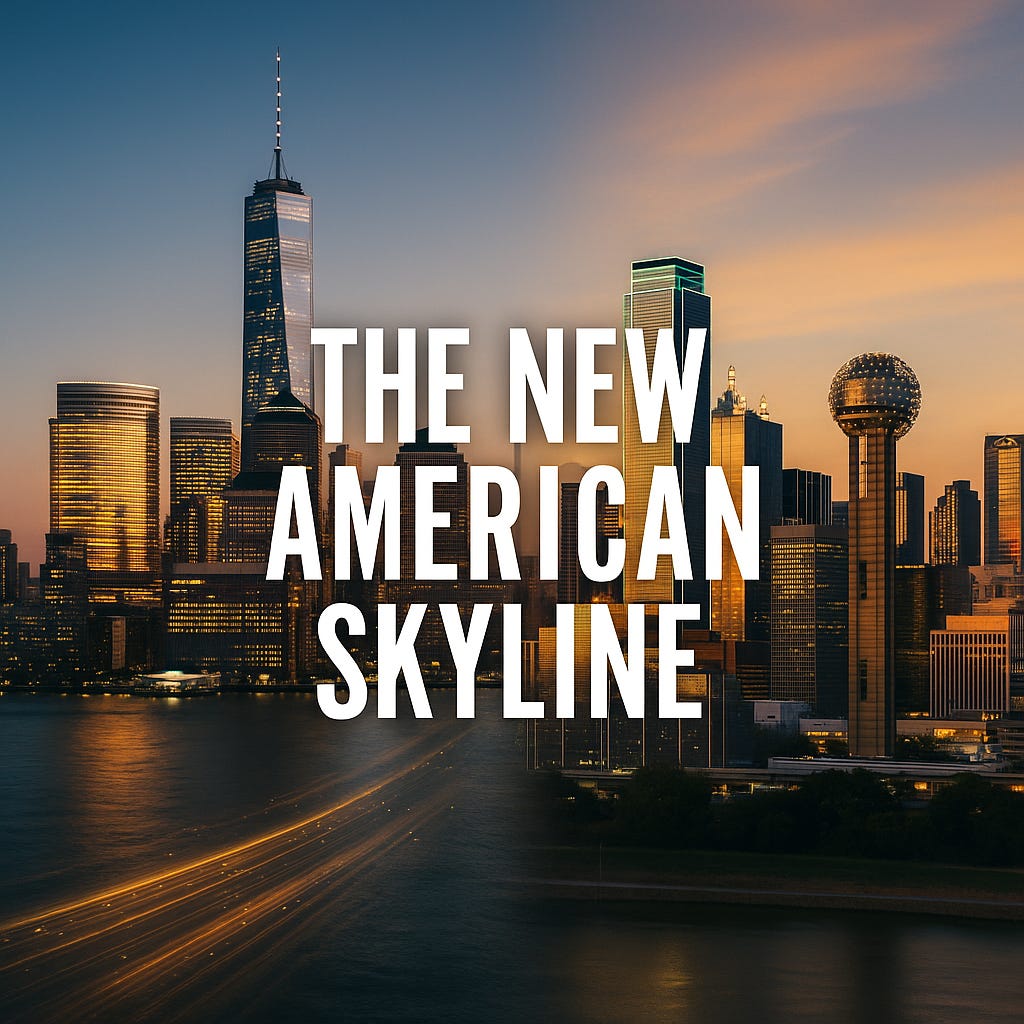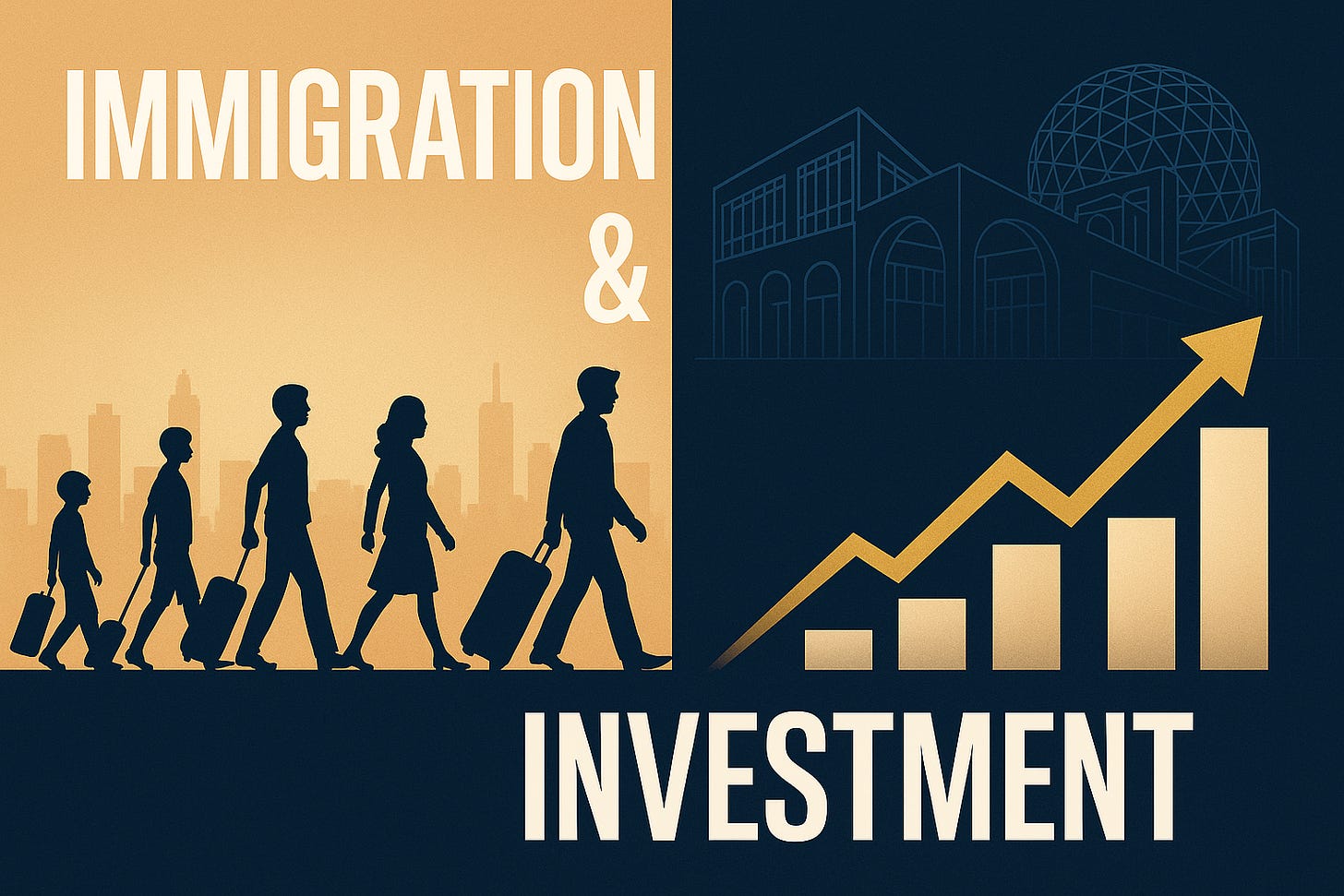The New American Skyline: Why North Texas Is the Next Great Commercial Real Estate Story
History doesn’t repeat itself — but in commercial real estate, it often rhymes.
A century ago, ships from Europe lined up at New York Harbor, unloading millions of immigrants chasing opportunity. Those arrivals didn’t just transform culture — they fueled a property boom that turned Manhattan into the world’s most valuable island. Half a century later, Los Angeles became the western symbol of reinvention, powered by aerospace, entertainment, and another wave of migration.
Today, that same equation — immigration + innovation + infrastructure — is repeating itself deep in the heart of Texas.
The North Texas migration moment
Dallas–Fort Worth has become the modern-day Ellis Island — minus the ferry ride. More than 400 people move to the metro every day, and a striking portion of that growth comes from South Asian and immigrant families bringing both talent and capital. The region’s Indian-origin community has grown more than 150% in a decade, and with it has come a new generation of technologists, physicians, and entrepreneurs who are also becoming first-time commercial real-estate investors. They’re not just buying space; they’re building legacy — funding retail centers, office condos, and mixed-use projects that reflect their community’s entrepreneurial drive. As one investor in Plano put it, “Our parents came here for opportunity. We’re staying here to build it.”
Corporate relocation: the modern industrial migration
In the early 1900s, corporations followed the people to New York and Chicago. In the 1950s, they chased sunshine and sprawl to Los Angeles and Phoenix. Now, they’re chasing efficiency, talent, and connectivity to Dallas–Fort Worth. From Goldman Sachs’s new Uptown Dallas campus to JP Morgan Chase’s 1.4-million-square-foot Plano headquarters, and the coming Texas Stock Exchange, the region has become America’s boardroom. Add Toyota, McKesson, Charles Schwab, and more than 50 Fortune 1000 companies, and North Texas now hosts one of the densest concentrations of corporate power outside Manhattan. Every relocation means jobs. Every job means rooftops. Every rooftop demands retail. It’s the same domino effect that made Midtown and Century City global CRE icons — only now, it’s happening with Texas speed and sunlight.
Infrastructure and land: the Texas advantage
Historic markets like New York and L.A. eventually ran out of land and patience for infrastructure. North Texas has both. The region’s Outer Loop project, DFW Airport’s expansion, and a wave of new tollways have created a canvas for developers that stretches from Frisco to Denton to Prosper and Sherman. Combine that with business-friendly zoning, affordable power, and a talent pool trained in the region’s universities, and the result is a CRE environment that’s scalable, sustainable, and still accessible. In New York, space is a premium. In Texas, space is potential.
Immigration and investment: parallel stories
What made early New York great wasn’t just immigration — it was the capital and culture that came with it. Ethnic enclaves became economic engines; small business owners became property owners. That pattern is repeating in DFW. The South Asian community — particularly Indian professionals in tech, healthcare, and finance — are emerging as a new investor class. They’re buying retail centers, forming LLCs with peers, and financing developments that double as cultural anchors: restaurants, learning centers, sports facilities, and temples. The same story that once played out in Brooklyn and the Bronx is unfolding in Frisco and Allen — only with better broadband.
From local pride to global capital
The globalization of Dallas–Fort Worth isn’t accidental — it’s engineered. Immigrants bring the work ethic; corporations bring the payroll; developers bring the blueprint. This convergence of people, capital, and infrastructure is exactly how every great real-estate market in history has been built. The difference is that North Texas still has room to run — and communities eager to invest in its next chapter.
Our take: the next great market is already here
Real-estate greatness isn’t about geography — it’s about momentum. New York had immigration. Los Angeles had imagination. North Texas has both — plus 10,000 acres and a business plan. For property owners, developers, and investors, the signal couldn’t be clearer: this is the generational window. The next century of American real estate will be written in the same language as the last — only this time, it will sound a lot more like Texas.


